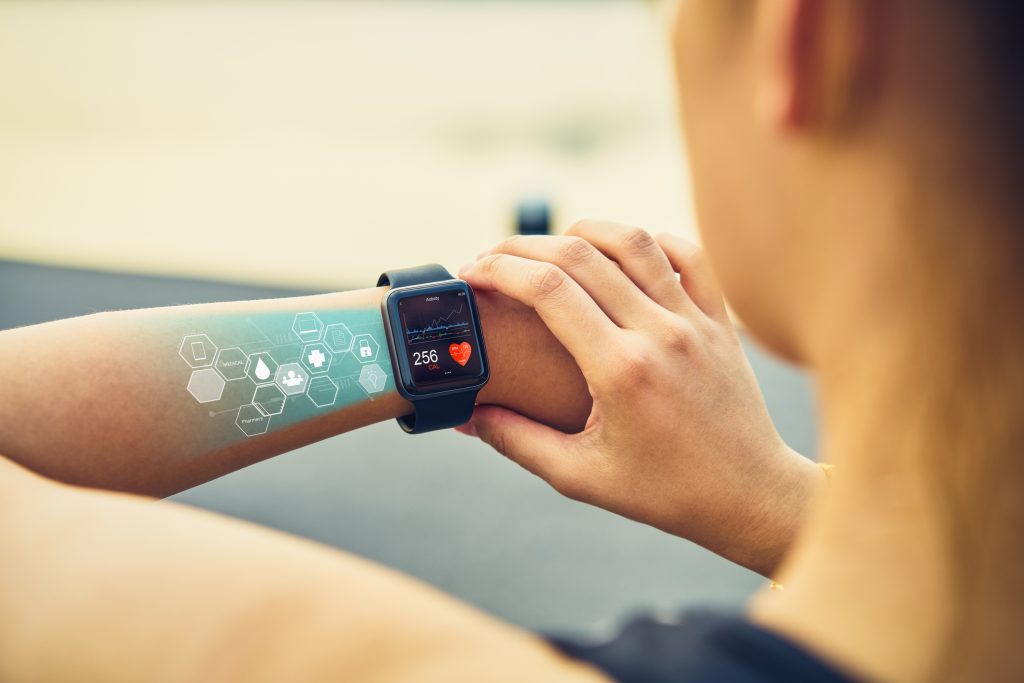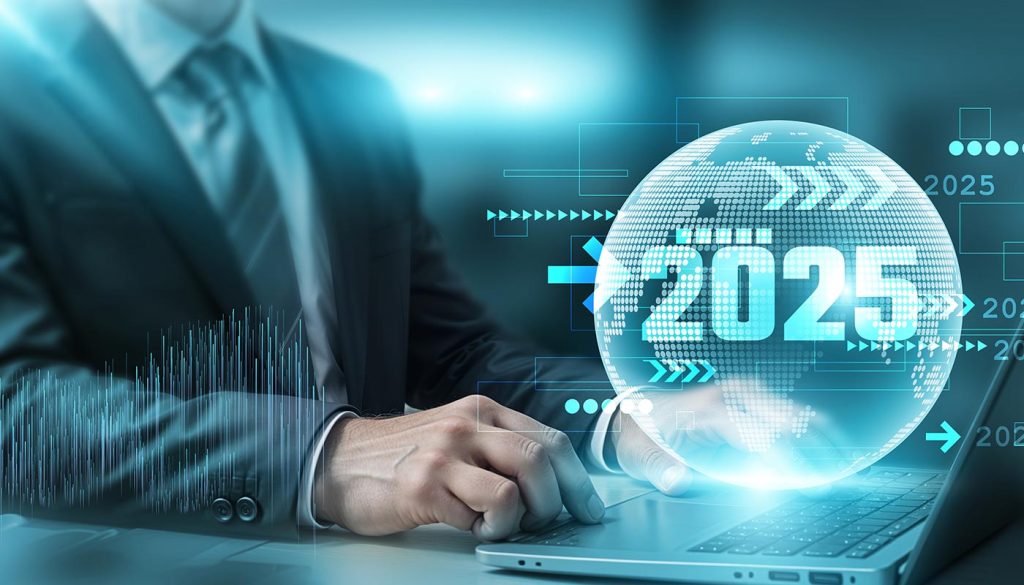
Imagine a world where your doctor can predict a health issue before you even feel a symptom, or where a virtual reality headset helps you recover from a stroke with a smile. This isn’t science fiction—it’s the reality of healthcare in 2025, driven by groundbreaking technological advancements. As someone who’s watched a loved one navigate chronic illness, I’ve seen firsthand how technology can transform lives. From wearable devices tracking my father’s heart rate to telehealth appointments saving us hours of travel, the healthcare industry is evolving at lightning speed. In this blog post, we’ll dive deep into the emerging tech trends reshaping healthcare in 2025, exploring their potential, challenges, and real-world impact. Buckle up—it’s a fascinating journey!
Artificial Intelligence: The Brain Behind Better Care
Artificial intelligence (AI) is no longer just a buzzword; it’s the backbone of modern healthcare. From diagnostics to administrative tasks, AI is streamlining processes and saving lives. Picture this: a radiologist analyzing an MRI scan in seconds, thanks to AI-powered tools that flag abnormalities with uncanny accuracy. According to a 2025 report by McKinsey, 85% of healthcare leaders are investing in generative AI, which can summarize patient records, predict outcomes, and even assist in surgical planning. For example, IBM Watson, a pioneer in AI healthcare, helps oncologists analyze vast datasets to recommend personalized cancer treatments.
But it’s not just about diagnostics. AI is tackling administrative burdens too. I recently spoke with a nurse who described how AI-driven chatbots reduced her clinic’s appointment scheduling time by 40%. These virtual assistants answer patient queries, book appointments, and even remind patients to take their meds—freeing up staff to focus on care. However, challenges like data privacy and integration with legacy systems remain. Healthcare organizations must ensure compliance with regulations like HIPAA to protect sensitive data while adopting AI.
Telemedicine: Healthcare at Your Fingertips
The COVID-19 pandemic supercharged telemedicine, and in 2025, it’s a cornerstone of healthcare delivery. Virtual consultations have grown from 15.4% to 86.5% adoption between 2019 and 2021, per RXNT, and they’re still expanding. For rural patients or those with mobility issues, telemedicine is a game-changer. I recall my aunt, who lives in a remote village, consulting a cardiologist via video call—something unimaginable a decade ago. Platforms like Teladoc Health integrate AI symptom checkers and real-time data from wearables, making consultations more effective.
Telemedicine’s benefits extend beyond convenience. It reduces hospital readmissions by enabling continuous monitoring for chronic conditions like diabetes. Yet, it’s not without hurdles. High-speed internet access remains a barrier in underserved areas, and some patients still prefer in-person visits for complex diagnoses. Healthcare providers must balance virtual and in-person care to meet diverse needs, ensuring platforms are user-friendly and HIPAA-compliant.
Wearable Tech and IoMT: Your Health, Tracked 24/7
The Internet of Medical Things (IoMT) is transforming how we monitor health. Wearable devices like smartwatches and medical-grade sensors are projected to reach a $86.2 billion market by 2029, according to KMS Healthcare. These devices track everything from heart rate to sleep patterns, empowering patients and providers alike. My cousin, a diabetic, uses a connected insulin pump that alerts her doctor if her glucose levels spike, preventing emergencies.
IoMT isn’t just for patients. Hospitals use IoT-enabled wearables like Philips IntelliVue Guardian to monitor vitals, reducing mortality rates by 18%. Asset tracking via IoT has also cut equipment loss by 30%, saving millions. However, cybersecurity is a concern, as IoT devices are vulnerable to hacks. Providers must invest in encryption and regular updates to ensure data security, making IoMT a powerful yet complex trend.
Virtual and Augmented Reality: Healing Through Immersion
Virtual reality (VR) and augmented reality (AR) are no longer just for gamers—they’re revolutionizing healthcare. The VR healthcare market is expected to hit $6.02 billion by the end of 2025, per the Business Research Company. In rehabilitation, platforms like InMotion’s Corpus VR combine motion-based games with physical therapy, making recovery engaging. I once met a stroke survivor who credited VR therapy for regaining mobility while enjoying the process.
AR is equally transformative. Surgeons at Johns Hopkins use AR to overlay 3D anatomical models during procedures, improving precision. VR also aids mental health, with tools like the Virtual Reality Medical Center helping patients manage PTSD through immersive environments. The catch? Privacy concerns and high costs can limit adoption. Healthcare organizations must collaborate with developers to create affordable, HIPAA-compliant solutions.
Blockchain: Securing the Future of Medical Data
In an era of rampant data breaches—133 million health records were compromised in 2023 alone, per Zoho—blockchain offers a secure solution. This decentralized ledger ensures tamper-proof medical records, as seen in Estonia’s national health system. Blockchain also streamlines insurance claims and drug supply chains, reducing fraud. For instance, pharmaceutical companies use it to track drugs, ensuring authenticity.
Patients benefit too, controlling access to their records. Imagine sharing your medical history with a new doctor without worrying about data leaks. However, scaling blockchain solutions is costly, and integration with existing systems is tricky. Healthcare leaders must weigh these challenges against the promise of enhanced security and transparency.
Precision Medicine: Tailored Treatments, Powered by Data
Precision medicine is personalizing healthcare like never before. By analyzing genetics, lifestyle, and environmental data, it delivers targeted treatments. TATEEDA GLOBAL predicts the precision informatics market will exceed $10 billion in 2025. For example, cancer patients receive therapies tailored to their genetic profiles, improving outcomes.
This trend relies on big data and AI, which analyze vast datasets to identify patterns. My friend’s daughter, diagnosed with a rare genetic disorder, benefited from a treatment plan customized through precision medicine. Yet, ethical concerns like genetic privacy and access disparities persist. Healthcare systems must ensure equitable access while safeguarding data.
5G: The Connectivity Boost Healthcare Needs
The rollout of 5G is supercharging healthcare connectivity. With low latency and high bandwidth, 5G enables real-time remote monitoring and telemedicine, as seen in T-Mobile’s deployment at the Miami Veterans Affairs Healthcare System. The 5G healthcare market is projected to reach $1,038.55 billion by 2034. For instance, 5G allows surgeons to perform remote consultations with high-definition video, bridging gaps in specialist access.
However, infrastructure costs and uneven global access pose challenges. Rural areas may lag in 5G adoption, widening healthcare disparities. Providers must advocate for broader network coverage to maximize this technology’s potential.
Big Data Analytics: Turning Data into Decisions
Healthcare generates 30% of global data, and big data analytics is turning this into actionable insights. By 2029, the market is expected to reach $650 billion, per Statista. Real-time analytics help hospitals predict patient admissions, optimize resources, and prevent epidemics. For example, real-time health analytics enabled early intervention during a recent flu outbreak in my city.
Big data also supports value-based care, focusing on patient outcomes over procedures. However, managing this data requires robust governance and skilled professionals, which can be costly for smaller organizations. Investing in scalable analytics platforms is crucial for leveraging this trend.
Digital Therapeutics: Software as Medicine
Digital therapeutics (DTx) are software-based treatments backed by clinical evidence. Unlike wellness apps, DTx undergo rigorous trials and regulatory approval. They treat conditions like anxiety or insomnia through apps that guide users through cognitive behavioral therapy. The Uptech team developed a mental health app that tracks sleep and reduces anxiety, showing DTx’s potential.
DTx empowers patients to manage their health actively, but adoption faces hurdles like regulatory complexity and patient skepticism. Healthcare providers must educate patients and integrate DTx into care plans to maximize impact.
Sustainability in Healthcare Tech: A Greener Future
Healthcare accounts for 4.4% of global CO2 emissions, per Philips. AI is helping reduce this by optimizing supply chains and imaging processes. For example, AI-driven imaging cuts energy use per scan. Healthcare facilities are also transitioning to renewable energy and adopting sustainable software to lower their carbon footprint.
This trend aligns with consumer demand for eco-friendly practices. However, implementing sustainable infrastructure is costly and requires long-term commitment. Providers must balance these investments with patient care priorities.
Comparison Table: Top Healthcare Tech Trends in 2025
Emerging Tech Trends at a Glance
| Technology | Key Benefits | Challenges | Market Projection (2025) |
|---|---|---|---|
| AI | Faster diagnostics, personalized treatments, reduced administrative burdens | Data privacy, integration with legacy systems | $39.25B (CAGR 44.0%) |
| Telemedicine | Improved access, reduced costs, chronic disease management | Internet access, patient preference for in-person care | $280B |
| IoMT/Wearables | Real-time monitoring, early intervention, operational efficiency | Cybersecurity risks, calibration accuracy | $86.2B (by 2029) |
| VR/AR | Enhanced training, engaging rehabilitation, mental health therapy | High costs, privacy concerns | $6.02B |
| Blockchain | Secure data sharing, fraud prevention, transparent records | Scalability, integration complexity | N/A |
| Precision Medicine | Tailored treatments, improved outcomes | Ethical concerns, access disparities | $10B+ |
| 5G | Real-time connectivity, enhanced telemedicine | Infrastructure costs, uneven access | $1,038.55B (by 2034) |
| Big Data Analytics | Predictive insights, resource optimization, value-based care | Data governance, high costs | $650B (by 2029) |
| Digital Therapeutics | Evidence-based treatment, patient empowerment | Regulatory hurdles, patient skepticism | N/A |
| Sustainable Tech | Reduced emissions, eco-friendly practices | High implementation costs, long-term commitment | N/A |
FAQ: Your Questions About 2025 Healthcare Tech Trends Answered
What is the most impactful tech trend in healthcare for 2025?
AI stands out due to its versatility, from diagnostics to administrative efficiency. Its ability to process vast data quickly makes it a game-changer, though telemedicine and IoMT are close contenders for accessibility.
How does telemedicine improve access to care?
Telemedicine enables virtual consultations, reducing travel barriers for rural or mobility-challenged patients. It also supports chronic disease management through real-time data, though internet access remains a challenge.
Are wearable devices secure?
While IoMT devices offer immense benefits, they’re vulnerable to cyberattacks. Providers must use encryption and regular updates to protect data, adhering to regulations like HIPAA.
How does VR help in healthcare?
VR enhances training, rehabilitation, and mental health therapy by creating immersive, engaging environments. It’s particularly effective for stroke recovery and PTSD treatment but requires investment in privacy-compliant platforms.
What role does blockchain play in healthcare?
Blockchain secures medical records, streamlines claims, and prevents drug counterfeiting. Its decentralized nature ensures transparency, but scaling it is costly and complex.
Why is sustainability important in healthcare tech?
With healthcare contributing significantly to global emissions, sustainable tech like AI-optimized imaging and renewable energy reduces environmental impact, aligning with consumer demand for eco-friendly practices.
Conclusion: Embracing the Future of Healthcare
As we stand on the cusp of 2025, the healthcare industry is undergoing a transformation unlike any before. From AI diagnosing diseases with pinpoint accuracy to telemedicine bringing care to remote corners, these emerging tech trends are redefining what’s possible. My own experiences—watching technology empower my family’s health journey—remind me how personal this revolution is. Each trend, from wearables to blockchain, offers unique benefits but comes with challenges like privacy, cost, and equity.
For healthcare providers, the next steps are clear: invest in scalable, secure solutions, prioritize patient education, and advocate for equitable access. For patients, embracing tools like wearables or DTx can empower you to take charge of your health. The future isn’t just coming—it’s here, and it’s up to us to harness its potential for a healthier, more connected world. What trend excites you most? Share your thoughts, and let’s keep the conversation going!


